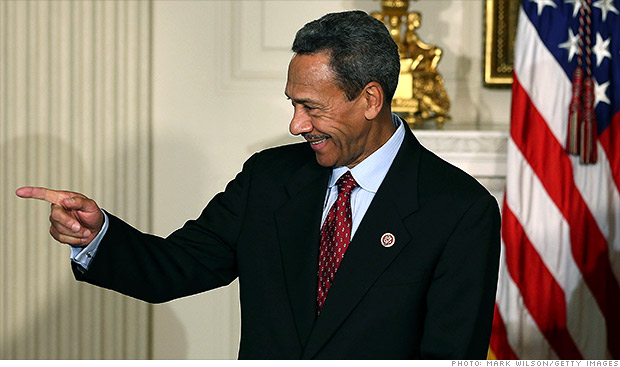 Related BZSUM #PreMarket Primer: Wednesday, May 14: Markets Surprised To Hear Bundesbank Is On Board With ECB Stimulus Market Wrap For May 13: Markets Close Again At Record Highs
Related BZSUM #PreMarket Primer: Wednesday, May 14: Markets Surprised To Hear Bundesbank Is On Board With ECB Stimulus Market Wrap For May 13: Markets Close Again At Record Highs Following the market opening Wednesday, the Dow traded down 0.36 percent to 16,655.95 while the NASDAQ declined 0.21 percent to 4,121.47. The S&P also fell, dropping 0.27 percent to 1,892.38.
Leading and Lagging Sectors
Basic Materials shares gained around 0.24 percent in trading on Wednesday. Meanwhile, top gainers in the sector included Harmony Gold Mining Company (NYSE: HMY), up 4.1 percent, and Thompson Creek Metals Company (NYSE: TC), up 3.8 percent. In trading on Wednesday, cyclical consumer goods & services shares were relative laggards, down on the day by about 0.36 percent.
Top decliners in the sector included Fossil Group (NASDAQ: FOSL), down 8.2 percent, and Kandi Technolgies Group (NASDAQ: KNDI), off 4.4 percent.
Top Headline
Macy's (NYSE: M) reported a rise in its first-quarter earnings. Macy's reaffirmed its outlook for the full year. It also increased its share-buyback plan by $1.5 billion and lifted its dividend by 25% to 31.25 cents per share. Macy's posted a quarterly profit of $224 million, or $0.60 per share, versus a year-ago profit of $217 million, or $0.55 per share. Its revenue slipped 1.7% to $6.28 billion. However, analysts were expecting earnings of $0.59 per share on revenue of $6.46 billion. Its revenue at stores open at least a year dropped 0.8%.
Equities Trading UP
SunOpta (NASDAQ: STKL) shares shot up 12.89 percent to $12.70 after the company reported upbeat Q1 earnings.
Shares of Isis Pharmaceuticals (NASDAQ: ISIS) got a boost, shooting up 10.16 percent to $27.64 after the company reported positive Phase 2 data on ISIS-GCGR Rx in HbA1c in patients with type 2 diabetes.
The Rubicon Project (NYSE: RUBI) shares were also up, gaining 27.09 percent to $14.45 after the company reported upbeat Q1 results and issued a strong outlook.
Equities Trading DOWN
Shares of Fossil Group (NASDAQ: FOSL) were 8.04 percent to $102.49 after the company issued a downbeat guidance. The company projected Q2 earnings of $0.90 to $0.97 per share, versus analysts' estimates of $1.16 per share.
USA Compression Partners LP (NYSE: USAC) shares tumbled 6.80 percent to $24.95 after the company priced 6.6 million units at $25.59 per unit.
Take-Two Interactive Software (NASDAQ: TTWO) was down, falling 3.32 percent to $19.95 after the company issued a weak outlook. For the first quarter, the company expected an adjusted loss of $0.35 to $0.25 per share on revenue of $120 million to $125 million. However, analysts expected a loss of $0.12 per share on revenue of $209.6 million.
Commodities
In commodity news, oil traded up 0.35 percent to $102.06, while gold traded up 0.95 percent to $1,307.10.
Silver traded up 1.86 percent Wednesday to $19.91, while copper rose 0.94 percent to $3.17.
Eurozone
European shares were lower today.
The eurozone's STOXX 600 declined 0.25 percent, the Spanish Ibex Index fell 0.05 percent, while Italy's FTSE MIB Index dropped 0.65 percent.
Meanwhile, the German DAX slipped 0.10 percent and the French CAC 40 tumbled 0.21 percent while UK shares fell 0.18 percent.
Economics
The MBA reported that its index of mortgage application activity rose 3.60% in the week ended May 9.
U.S. wholesale prices increased 0.6% in April, versus a revised 0.5% rise in March. However, economists were expecting a 0.2% gain in the PPI.
Posted-In: Earnings News Guidance Eurozone Futures Forex Global Econ #s Economics Intraday Update Markets Movers Tech
© 2014 Benzinga.com. Benzinga does not provide investment advice. All rights reserved.
Most Popular 5 Companies Apple Could Buy Instead Of Beats JPMorgan Comments on J.C. Penney In The Run-Up To Q1 Earnings Report 7 Stocks For Your Retirement Portfolio British American Tobacco Looks At Possible M&A Deals With Reynolds, Lorillard Breaking Biotech: Gilead's Phase 2 Study Results Sources Say Deal Between AT&T, DirecTV Could Get Done at $105/Share Related Articles (FOSL + BZSUM) Mid-Morning Market Update: Markets Open Lower; Macy's Posts Rise In Profit Fossil Beats on Q1 Earnings; Provides Weak Q2 View - Analyst Blog Morning Market Losers Late-Day Flash Crashes Rock Tuesday's Close Benzinga's Top #PreMarket Losers





 Popular Posts: Ring in the New Year Right – 3 Best Booze Stocks to Buy Now6 New Year's Resolutions for InvestorsBoeing Stock Continues to Soar for Investors Recent Posts: LinkedIn Stock Makes a Great Connection for Investors LNKD While The Dollar Dives, Multinational Stocks Rise 4 Reasons Markets May Be Even Better in 2014 View All Posts
Popular Posts: Ring in the New Year Right – 3 Best Booze Stocks to Buy Now6 New Year's Resolutions for InvestorsBoeing Stock Continues to Soar for Investors Recent Posts: LinkedIn Stock Makes a Great Connection for Investors LNKD While The Dollar Dives, Multinational Stocks Rise 4 Reasons Markets May Be Even Better in 2014 View All Posts 

 Popular Posts: 2 Top Healthcare Stock Picks for ObamacareQuality Is King This Q3 Earnings Season2 Fundamental Winners for Earnings Season Recent Posts: Go Global With This Generic Drugmaker Quality Is King This Q3 Earnings Season 23 Buzzwords to Know for Earnings Season View All Posts
Popular Posts: 2 Top Healthcare Stock Picks for ObamacareQuality Is King This Q3 Earnings Season2 Fundamental Winners for Earnings Season Recent Posts: Go Global With This Generic Drugmaker Quality Is King This Q3 Earnings Season 23 Buzzwords to Know for Earnings Season View All Posts 


 ) was downgraded by analysts at Wells Fargo on Thursday, as they believe shares of the insurance provider will lose some steam going forward.
) was downgraded by analysts at Wells Fargo on Thursday, as they believe shares of the insurance provider will lose some steam going forward.  Wlifredo Lee/AP WASHINGTON -- Falling energy prices kept a lid on wholesale inflation in July after a jump in gasoline had boosted prices in June. The Labor Department reported Wednesday that wholesale prices showed no change last month compared with June, when they had risen 0.8 percent. That was the most in nine months. Energy costs fell 0.2 percent, after June's 2.9 percent surge. Gasoline prices dropped 0.8 percent and natural gas costs slid 3.9 percent. Excluding volatile food and energy costs, so-called core prices rose just 0.2 percent. Core wholesale prices are up 1.2 percent over the past 12 months, the smallest one-year increase since November 2010. Tame inflation has helped consumers increase spending this year despite slow income growth and higher Social Security taxes. Aside from sharp swings in gas prices, consumer and wholesale inflation has barely increased in the past year. Overall wholesale prices rose 2.1 percent in July compared with the previous July. For July, drug prices rose 1 percent, the largest gain since a 2.5 percent rise in January. Drug companies have been introducing price increases in January and July of each year. Food costs were flat in July as a jump in pork prices was offset by a decline in the cost of fresh vegetables. On Thursday, the government will report on consumer prices for July, and economists estimate that overall and core prices rose just 0.2 percent. For the 12 months ending in June, overall consumer prices rose 1.8 percent and core prices 1.6 percent. Those levels are below the Fed's 2 percent target for inflation. At its last meeting in July, the Fed added language to its policy statement to express concern that inflation persistently below 2 percent could pose risks to the economy. The Fed announced after the meeting that it planned to keep buying $85 billion a month in bonds to keep downward pressure on long-term interest rates. It also said it planned to keep its key short-term rate near zero, where it's remained since December 2008 -- at least as long as unemployment is above 6.5 percent. Chairman Ben Bernanke and other Fed officials have said the central bank could start slowing its bond purchases later this year. Some economists think that could begin after the Fed's next meeting in September. Most expect the slowdown to be gradual. New bond purchases might not end until mid-2014 -- and only then if the unemployment rate has dropped to around 7 percent. Unemployment fell in July to 7.4 percent from 7.6 percent in June. The July figure was a 4½-year low, but it was still well above the 5 percent to 6 percent range that economists associate with a healthy economy. The combination of modest economic growth and still-high unemployment has kept wages from rising quickly. That's made it harder for businesses to raise prices.
Wlifredo Lee/AP WASHINGTON -- Falling energy prices kept a lid on wholesale inflation in July after a jump in gasoline had boosted prices in June. The Labor Department reported Wednesday that wholesale prices showed no change last month compared with June, when they had risen 0.8 percent. That was the most in nine months. Energy costs fell 0.2 percent, after June's 2.9 percent surge. Gasoline prices dropped 0.8 percent and natural gas costs slid 3.9 percent. Excluding volatile food and energy costs, so-called core prices rose just 0.2 percent. Core wholesale prices are up 1.2 percent over the past 12 months, the smallest one-year increase since November 2010. Tame inflation has helped consumers increase spending this year despite slow income growth and higher Social Security taxes. Aside from sharp swings in gas prices, consumer and wholesale inflation has barely increased in the past year. Overall wholesale prices rose 2.1 percent in July compared with the previous July. For July, drug prices rose 1 percent, the largest gain since a 2.5 percent rise in January. Drug companies have been introducing price increases in January and July of each year. Food costs were flat in July as a jump in pork prices was offset by a decline in the cost of fresh vegetables. On Thursday, the government will report on consumer prices for July, and economists estimate that overall and core prices rose just 0.2 percent. For the 12 months ending in June, overall consumer prices rose 1.8 percent and core prices 1.6 percent. Those levels are below the Fed's 2 percent target for inflation. At its last meeting in July, the Fed added language to its policy statement to express concern that inflation persistently below 2 percent could pose risks to the economy. The Fed announced after the meeting that it planned to keep buying $85 billion a month in bonds to keep downward pressure on long-term interest rates. It also said it planned to keep its key short-term rate near zero, where it's remained since December 2008 -- at least as long as unemployment is above 6.5 percent. Chairman Ben Bernanke and other Fed officials have said the central bank could start slowing its bond purchases later this year. Some economists think that could begin after the Fed's next meeting in September. Most expect the slowdown to be gradual. New bond purchases might not end until mid-2014 -- and only then if the unemployment rate has dropped to around 7 percent. Unemployment fell in July to 7.4 percent from 7.6 percent in June. The July figure was a 4½-year low, but it was still well above the 5 percent to 6 percent range that economists associate with a healthy economy. The combination of modest economic growth and still-high unemployment has kept wages from rising quickly. That's made it harder for businesses to raise prices.